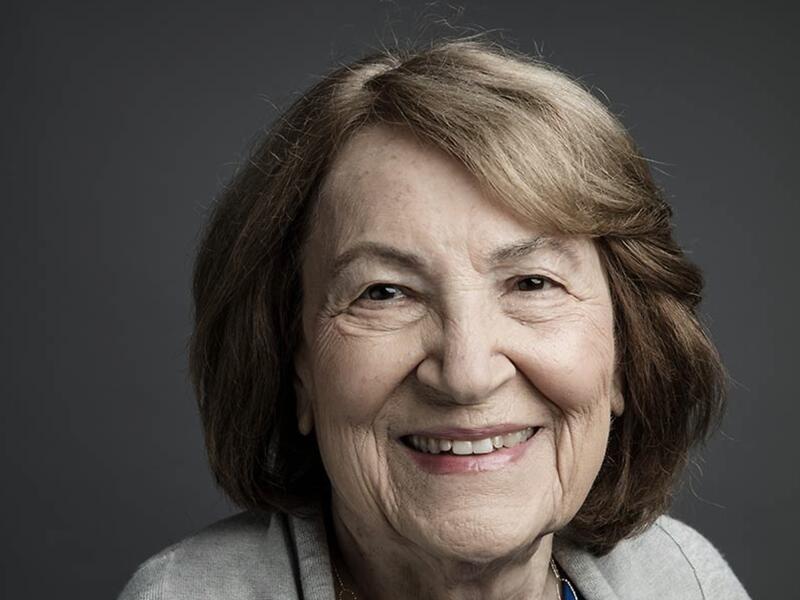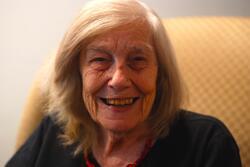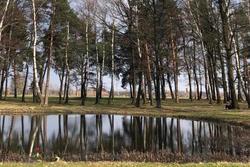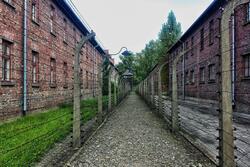A Tale of Kindness and Survival
“Five hundred and ninety-nine women would line up every day to give me a crumb of their bread.”
That simple sentence is, in essence, the story of Holocaust survivor Fritzie Fritzshall.
I met Fritzie while working at the Illinois Holocaust Museum and Education Center in Skokie. She was the president of the museum and seemingly always available to tell her story to anyone who was willing to listen.
Born Fritzie Weiss in Klucharky, Czechoslovakia in 1929, she had a normal childhood until the age of thirteen, when the Nazis invaded her hometown and rounded up the Jews, forcing them onto cattle cars, where they spent the next few days forced to stand, with no room to move or sit, all using the same bucket as their toilet. The train carried Fritzie, her mother, and her two younger brothers to Poland, with its final stop at Auschwitz.
Here’s how Fritzie described her arrival in Auschwitz in her testimony to the University of Southern California Shoah Foundation: “The doors [of the train] open and you’re greeted by a very bright light coming into the compartment… And you hear loudspeakers, you hear orders given in a language you don’t understand.”
As they were cleared from the train, one Jewish prisoner wandered among the new arrivals, whispering in Yiddish to any child he could find, “You’re 15—remember you’re 15.” “They knew what we did not know,” Fritzie recalled in her testimony. “They knew that the children under the age of 15…would go to the gas chambers.”
Fritzie and her mother were separated from her two brothers; that was the last time they saw each other. They now stood in a line of women of working age. Eventually, Fritzie and her mother were also separated, when Fritzie’s mother moved to a line of older women. “When I asked several hours later when I would see her,” Fritzie recalled, “they pointed to the smoke in [the death camp] Birkenau.”
Fritzie’s next memory was of having her head shaved. After being moved into the barracks, Fritzie miraculously found and reunited with her Aunt Bella, her mother’s youngest sister, who gave Fritzie a sense of security that was key to her survival. Fritzie recalled how she and her Aunt Bella slept in the same bunk. Every night, Bella told Fritzie, “Let’s live through tonight. Let’s just live through one more night. Tomorrow will be better.”
Eventually, Fritzie was moved to a labor camp within Auschwitz, making parts for German airplanes in a factory. It was in this factory that Fritzie met the 599 women who helped her survive the war. The women decided that Fritzie had the best chance of survival because she was young. They vowed to help her survive if she promised she would tell their stories. Every day, these women would line up and each give Fritzie one crumb of their bread rations. Fritzie credited her survival to their generosity, and until the day she died in June 2021, kept her promise to tell their stories.
Fritzie was one of the first survivors to be filmed for USC Shoah Foundation’s Dimensions in Testimony, a project that allows people to “speak” with Holocaust survivors using natural language processing. Through recorded interviews, the survivors can answer people’s questions as if they are in the same room, having a conversation. Although Fritzie is gone, and many other survivors are or soon will be, projects like these allow their stories to live on and conversations about the Holocaust to continue.
Every time I make challah, I honor Fritzie and the women who saved her by taking a moment to pause and remember their stories and consider how bread was what kept Fritzie alive.
This Yom HaShoah, join me in making challah to remember Fritzie, the women who helped her survive, and all the other victims and survivors of the Shoah. You can find my challah recipe below.
Challah Recipe
4½ tsp instant yeast (Two packets of active dry yeast works, too, but I have found instant yeast results in a fluffier texture.)
¾ cup sugar
2 large eggs, beaten
1 tsp kosher salt
½ cup vegetable or canola oil
7 cups all-purpose flour (I typically use anywhere from 6-8 cups of flour, depending on the temperature and humidity outside)
Whisk eggs, salt, ½ cup oil, ¾ cup sugar, 2 cups warm water, and yeast in a large bowl.
Add the beaten eggs and flour, one cup at a time, to the yeast mixture. Use a strong spatula to mix at the beginning and your hands once it gets too difficult with the spatula.
Once the dough is fully mixed, turn it onto a floured surface and knead for ten minutes. (If you don’t knead the dough well enough, the challah will not hold its shape when braided.)
Grease a large bowl with oil spray and transfer the dough to the bowl. Cover with a damp paper towel and put in the oven to proof. (Make sure the oven is off!) Proof until the dough is doubled in size, about 45 minutes to an hour.
Once proofed, turn the dough onto a floured surface and cut into six equal portions. Keep three portions out and place three back into the bowl. Shape each of the three portions into a long rope. Using your palm, press the three ropes together at the top and begin braiding the dough. Once you’re finished braiding, tuck each of the ends under to create a more finished look. Do the same with the remaining three pieces of dough to make a second loaf. Let proof for another 30 minutes.
Preheat the oven to 350 degrees. While the oven is heating, beat one egg with a splash of water to create an egg wash. Using a pastry brush, brush the egg wash over the top of the loaves. Bake the loaves for 30-35 minutes or until they sound hollow when you tap on the bottom.







Lovely story, and nice to add recipe for challa in memory of Fritzie
Thank you for remembering Fritzie. Her story and memory continues whenever we share her life with others. I miss her deeply.
Thank you for sharing!